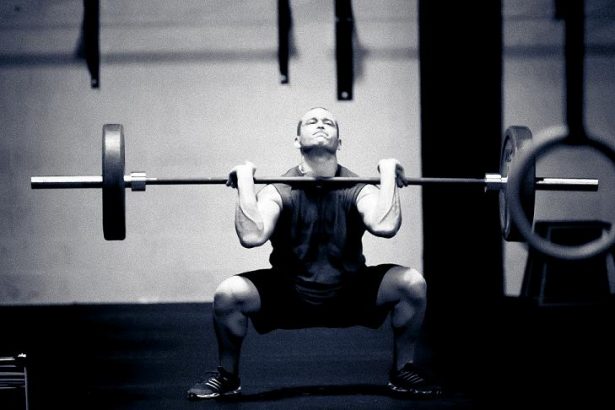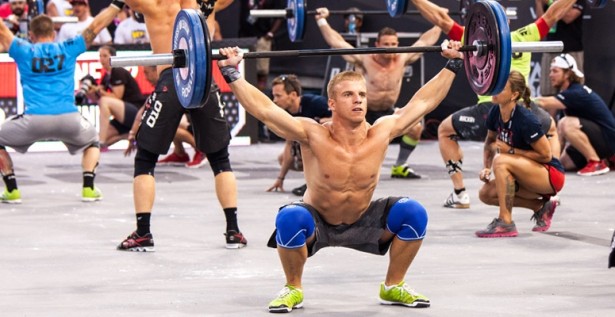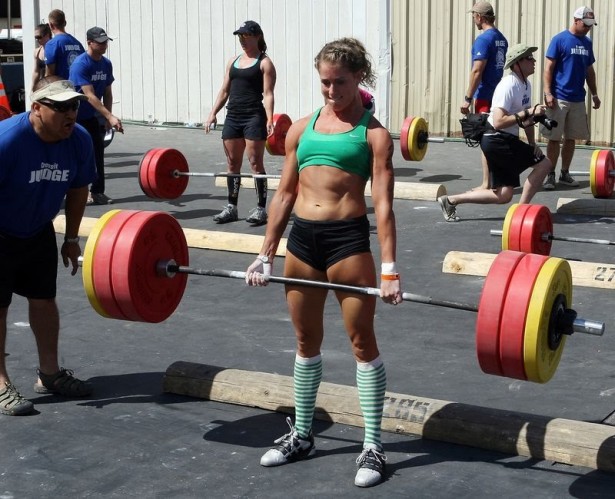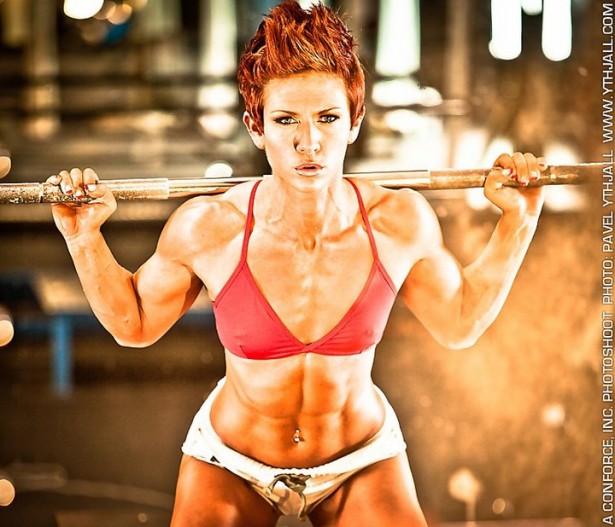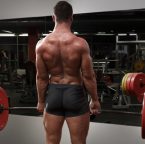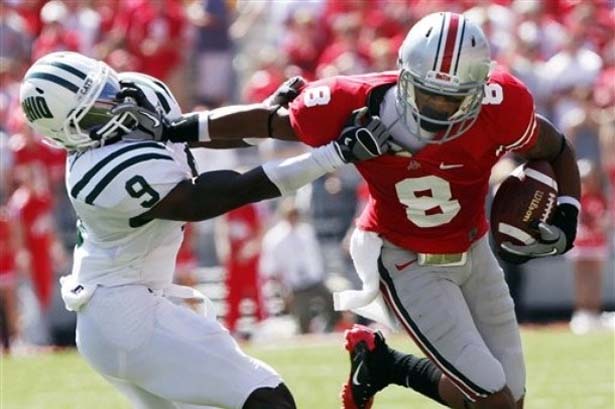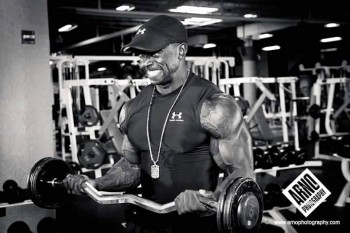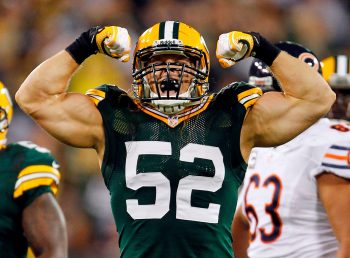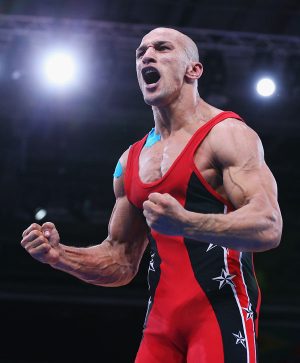The basic strength movements that fostered the sport of bodybuilding, and physique sports for that matter have seemed to be forgotten recently. A leg extension is more commonly performed over a barbell squat and if you want solid triceps then by all means, dumbbell kickbacks are the way to go. Forget dips. Or better yet dips with chains.
I’m well aware I’ll be hitting a nerve in writing this. It seems that if you really want to ruffle feathers or spark up an internet debate, all you have to do is mention “barbells” “compound lifts” “Olympic lifts” or “strength” in the same sentence as “female athlete” and suddenly everyone’ is in arms. Unless you’re specific about the CONTEXT, more than likely you’ll get feedback from trainers screaming that those training methods are non functional and on the wrong side of the risk/reward continuum. It seems that when it comes to physique sports and in particular, training protocols for female figure, fitness and bikini athletes it’s become all about two things 1) chronic cardio until you pass out and 2) Isometric exercises until you puke.
I have always believed that the best physiques in the sports of bodybuilding and figure are physiques that have a certain measure of athleticism to them. No one wants to look up at a figure athlete and just see a great set of quads or a phenomenal cap on the shoulder- rather you want to see a complete package that flows, ties, and works top to bottom, front to back, side to side. It’s for that reason that I maintain in order to look like an athlete you need to train like an athlete- a main reason why I engage in athletic style drills, do frequent plyometric and track work, and make HIIT sessions a weekly priority. It’s also why I began to CrossFit- a few weeks prior to my last competition. I wanted to get back to the basics- to experience basic strength movements, to engage in functional fitness training, and to encourage that streamlined, athletic appearance in my physique.
Olympic weightlifting is pretty much outlawed in your standard corporate gym facility. Think about how often you see someone snatch. Clean and jerk. EXACTLY- you usually don’t. You generally need a lot of space, plenty of chalk and rubber bumper plates to drop. More importantly, you may need a competent coach to guide you through the movements and make the proper adjustments. CrossFit loves basic compound movements and Oly lifts for a good reason: they are the most efficient way to build strength and explosive power while improving neuromuscular efficiency. They’re fundamentals in the CrossFit world.
Where am I going with this? Well, in CrossFit, you don’t train for any particular one thing, but for the unknown and unknowable. HOWEVER that does not mean that the training doesn’t DIRECTLY translate into sport- because it does. Therefore it also translates into physique. I can attest to several things since incorporating strength compound movement and Oly lifts into my training: 1) I am stronger, 2)I am more confident, 3)My LEAN BODY MASS has increased 4) My BODY FAT has decreased, and 5) The areas of concern for me (bigger delts, tight glutes) have miraculously begun to take care of themselves. My back and shoulders sport more muscle- and my glutes are getting stronger, smaller, and tighter.
So what I really want to do is get into the benefits of the basic compound movements and Olympic lifts and then discuss why I believe even physique athletes need to find a home for these movements within their own training.
1) Olympic and compound movements (when done properly) are safe. I know there are those out there who are going to disagree with me, but I believe when performed properly these movements are safer then machine based exercises. They require focus, good form and due to the nature of most of the movements it’s hard to induce injury by trying to move too much weight. There is little room for forced reps, overload techniques, or cheating. The guided movement and support of machines causes muscle imbalances and doesn’t teach the body how to move properly. Injury usually occurs off of these machines when performing everyday tasks such as picking up a box and putting it on a shelf or playing with your kids. The basics, the fundamentals, and Oly lifting not only strengthens your entire body, but it teaches you how to move properly in day to day life. It forces you to choose weights based on your abilities and current level of strength and conditioning, but the payoff is worth it. There is nothing like hoisting your bodyweight from floor to overhead.
2) The human body is one piece. This ties into why I believe this method of training has a home in the workouts of physique athletes. It requires total mind to total body connection. It creates a physique that ties and flows together, not just a meshing of random well developed body parts. By lifting the bar from the ground to overhead, the entire body is called into act. As you progress and begin to slowly add weights to the Olympic Lifts, the entire body compensates by getting bigger and stronger. Personally, I discovered a whole chain of muscles I was unaware I had- I was sore in places I didn’t know I could be sore. What muscles do the Olympic Lifts build? ALL OF THEM. Performing Oly lifts and even some basic movements like a squat requires just about every muscle in your body to fire. Just to hold the weight overhead, every stabilizer muscle throughout your midline has to be engaged or else you fall over. Moving the weight through the entire range of motion provides you with a higher anaerobic output than machines can provide thus allowing your body to simultaneously burn more fat and build more muscle. In an 8 week Olympic weightlifting program study, participants lowered their resting heart rate by 8%, lean body weight increased by 4%, fat dropped 6%, and systolic blood pressure decreased by 4%. This leads me to reason #3…
3) There is a reason CrossFit is such an aerobic workout. A tough set of snatches will leave you winded and gasping. I did Fran for the first time the other week and thought I was going to wipe out between thrusters and pull-ups. Working the basics, utilizing bodyweight, barbells and doing some Oly training is a great way to mesh aerobic with anaerobic training and bolster cardiovascular health without having to hit the track, spend hours on the treadmill, or even worse- the dreaded elliptical
4) This style of training DOES translate to sports. Sports and athleticism is about coordination and explosive power. The Oly lifts teach the body to become more efficient in the explosive movements and the basics (squats, presses) teach foundational muscle strength. You learn to engage more of your muscle fibers more rapidly than athletes who don’t train to do so. In order to perform the lifts correctly, you will also need to build the neuromuscular highway to fire the proper muscle groups in the proper sequence. Think about a quarterback who flicks his wrist before he releases the ball.
5) They don’t take long. Nia Shanks, author of “Beautiful Badass” claims that the basic fundamental movements of strength training (including Oly lifts) are “The most bang for your training buck”. More is not always better. With this style of lifting the emphasis falls on quality over quantity. Most gym rats and gym trainees (myself included) seem to subscribe to this fatigue mindset, that if we don’t leave the gym utterly wipes, spent, feeling like a dead zombie, and beat to a pulp then we somehow didn’t train hard enough. It’s training dogma- because in all honestly your workouts should be short and concise, intense, challenging, and ENERGIZING. Compounds and Oly lifts work all muscles and tax the aerobic system in a short amount of time. I could go off on the benefits of short concise workouts (think HIIT sessions over steady state chronic cardio) but that’s a whole other article.—>(HIIT – What, Why & How?)
6) It builds confidence. As physique athletes we are steered towards focusing on how our body looks rather then what it can do. I think my confidence has soared since beginning CrossFit and utilizing these methods of training in my own routines. Rather then being overcome with what body does or doesn’t look like and how it should look, or how I want it to look, I can focus on performance goals- I can center in on what my body can do. It’s a fulfilling feeling to successfully complete a CrossFit routine with strength, to perform Olympic moves and to see your squat or your deadlift go up each week. It’s a tangible achievement which is something we don’t often get in the world of physique sports.
7) In focusing on mastering some of the basic movements and Oly lifts you will find that you are achieving your other fitness goals as well, without even trying. If you want to lose body fat, create bigger delts, generate tighter glutes, or a bigger quad sweep- you’ll find that focusing on getting stronger through these movements will generate those results as byproducts. It may sound odd to focus on performance if all you really want is ripped abs at the beach- but mastering your bodyweight, training the basics and throwing in the oly lifts are the best ways to sculpt a built, lean, muscular body.
8) They’re fun. For me this has been a huge proponent in why I return to CrossFit and why I’m anxious to work even more of the big lifts. I used to avoid those styles of lifting because I was told they had no home in the training protocol of a figure athlete, and partially because (I’ll be honest) I was afraid of them. I am still by no means an expert, but I at least understand them. The oly lifts require practice and patience. Performing the basics is humbling. Despite the fact that I’m a seasoned weight lifter there is a huge difference between a smith machine squat and a good old fashioned barbell squat. Or better yet a thruster or a sumo squat. It’s fun to stomp your feet and throw around rubber bumper plates. I break a sweat just from contracting muscles I never knew I had. I know that once I can stop overthinking the movements and when my technique catches up to my root strength I’ll begin to see dramatic improvements.
For more on Olympic lifts and the fundamentals I recommend visiting Bodybuilding.com’s exercise arsenal: https://www.bodybuilding.com/exercises/finder/lookup/filter/exercisetype/id/6/exercisetype/olympic-weightlifting
They offer up videos, descriptions and beginning programs!
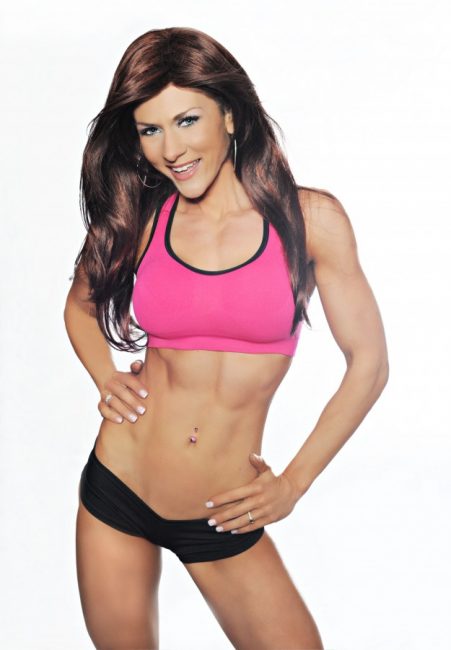
Allison Moyer-Fahrenbach is a nationally and internationally published fitness model, accomplished NPC Figure Competitor, and respected CrossFit and strength athlete. Based in Lancaster, Pennsylvania, she is also a successful entrepreneur, motivational speaker, certified nutritionist, and performance dietary specialist with a proven track record of helping clients achieve peak health and performance.
Allison holds a Bachelor’s degree in Wellness and Sports Science and multiple advanced certifications, including Certified Personal Trainer (CPT), Certified Sports Nutritionist (CSN), Certified Strength and Conditioning Coach (CSCC), CrossFit Level 1 (CF-L1), and CrossFit Weightlifting. Her expertise blends formal education, competitive athletic experience, and years of hands-on coaching to deliver results-driven training and nutrition programs.
[wp_ad_camp_1]

